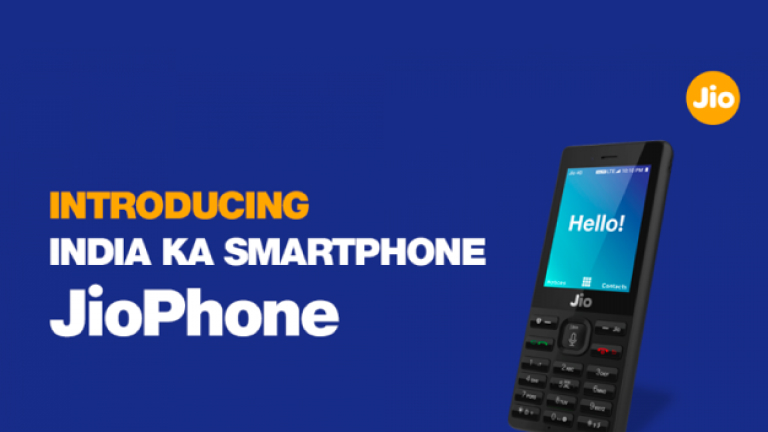Image source: Reliance Jio
The upcoming launch of JioPhone (announced last week) is likely to be a game changer not just for the telecom industry but the larger digital and mobile landscape as well.
It has all the makings of a service that can be beneficial to a large segment of the Indian population and has the potential to impact every aspect of their lives. The JioPhone effectively bridges the gap between feature phones and smartphones as it packs all the core features of the latter without the price tag. It is a feature phone with 4GVoLTE, NFC technology for payments (to be activated via software update) and compatible with voice commands in Indian languages.
From a developer perspective, this new phone could open up a third (or fourth if you include Windows Phone) new eco system for mobile app developers in India. Equipped with all the features of a smartphone and combined with high-speed data connectivity, a plethora of apps could make a beeline into the app store of this device. The device runs on an OS called KaiOS, a fork of the now defunct Firefox OS. The standard web app development stack is used to develop apps for this platform. So there will not be a dearth of app developers for this platform. Game publishers and content providers will be rushing to grab a bit of this market share by creating apps for this platform. So it will not be hard to port the existing web based apps to work on this device. Also, it is just one device that developers need to support, unlike other mobile platforms.
Since the device will have an app store, it’s pretty evident that it could be opened up for third party app developers to publish apps for this device. After all, a thriving apps eco system is required for a wide scale adoption of any mobile device, as we have seen in the case of some of the mobile OS systems. In a way, Reliance has created a platform similar to Apple by creating a device and an app ecosystem. However, it’s not yet known how this app store would be governed. It has to be opened up to developers and app publishers for it to flourish. We have to wait and see how the developer eco system will respond to this platform.
The monetization from this audience can also be very challenging because the users in this segment may not be willing to spend beyond the default apps & services. The default Jio apps already provide a lot of content in all forms under the one plan, so the users may not be willing to spend beyond what they pay monthly on this. Even for free content, the advertising revenues may be limited. It will be interesting to see if the ad networks would start supporting these devices.
We have already started seeing interest from some of our clients to develop apps for this platform. It is only a matter of time before a large number of brands seek out the JioPhone opportunity – after all, it is a sizeable market that simply can’t be ignored.





